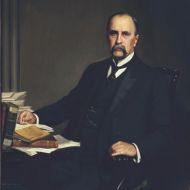For some time a jeremiad theme has been dominant in the psychiatric sector of the academic-industrial complex. Blockbuster psychiatric medications are going off patent, the pipeline is viewed as alarmingly empty, and several corporations are scaling back or even abandoning their research programs in this area. Analyses of the reasons range from the enlightened to the pragmatic to the pedantic to the foolish. Everyone predicts that things will turn bleak in academic clinical research if the corporate spigot is turned off.
Lost in the wailing is a clear understanding that the defecting corporations are acting out of their own enlightened self interest. For 50 years, no fundamentally incisive innovations have occurred, so the defectors are telling the academics to get their act together in respect of better understanding disease mechanisms. Trouble is, too many academic clinical investigators have devolved into key opinion leaders promoting corporate marketing messages at the expense of generating original clinical science. Now they are squawking about being caught with their pants down…
 The way Medicine works, there are the Grand Old Men and Women who rise to prominence as clinicians, teachers, authors, or researchers who define a specialty or even the times – people like William Osler, William Stewart Halstead, or Adolf Meyer are known to all. But every medical school has portraits of the previous local giants with named lectureships hanging in the main lecture halls. They certainly had wide influence, but what happened in psychiatry in the 1990s was something else. This tradition became a commodity, Key Opinion Leaders, who were a tool for institutional [and personal] fund-raising. And accomplishment was measured by length of resume and fund-raising ability. This wasn’t a universal changeover, but was common enough to be obvious to anyone who looked.
The way Medicine works, there are the Grand Old Men and Women who rise to prominence as clinicians, teachers, authors, or researchers who define a specialty or even the times – people like William Osler, William Stewart Halstead, or Adolf Meyer are known to all. But every medical school has portraits of the previous local giants with named lectureships hanging in the main lecture halls. They certainly had wide influence, but what happened in psychiatry in the 1990s was something else. This tradition became a commodity, Key Opinion Leaders, who were a tool for institutional [and personal] fund-raising. And accomplishment was measured by length of resume and fund-raising ability. This wasn’t a universal changeover, but was common enough to be obvious to anyone who looked.
And instead of those Grand Old Men and Women setting the tone and direction of Medicine, the new breed of KOLs were like the Aspens in Colorado, linked at the roots all saying the same things in concert, more chorus than soloist. And there was something I’d never seen before, long lists of industry affiliations and conflicts of interest appended to the end of their publications. They authored most of the clinical trials, but they didn’t do very many of them [industries did them]. Our literature was choked with their scientific papers about patients that most of the authors had never even met, and in fact many had never even seen the data itself. This is hardly the stuff of portraits hanging in some future lecture hall.
One lesson of this episode is that the chatter by federal scientific administrators [Hyman, Insel] about translational research strategies and innovative models of drug discovery is mostly vacuous rhetoric.
1990s, ‘Decade of the Brain’?
I guess the brain never got the memo.
Duane
Asking questions are actually nice thing if you are not understanding anything fully, however this paragraph offers pleasant understanding even.